You’ve found your person and are ready for the next steps—an engagement ring! Congratulations! Now comes the not-so-glamorous, but very important part: learning how to insure an engagement ring to protect your investment.
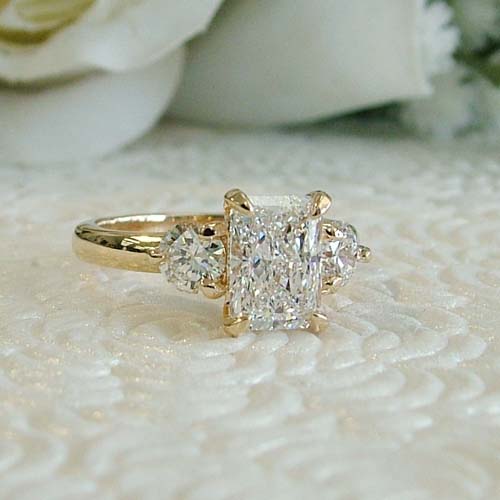
It’s actually not so hard, if you have the proper tools. Here’s what you’ll need and where to go to insure your engagement ring.
Step 1: Jewelry Appraisal
The first and most crucial document for insuring an engagement ring is a professional jewelry appraisal. This provides an expert valuation of the ring’s worth, which is necessary for determining the coverage amount. The appraisal will typically include:
- The carat weight, cut, color, and clarity of the diamond (or gemstones).
- Details of the metal type (e.g., platinum, white gold, etc.) and the ring’s design.
- Estimated market value or replacement cost.
In addition, make sure the jewelry appraisal is recent (usually within 1-2 years) because gemstone and metal prices fluctuate with the market.
After you’ve secured an updated appraisal, you’ve got options for insuring it.
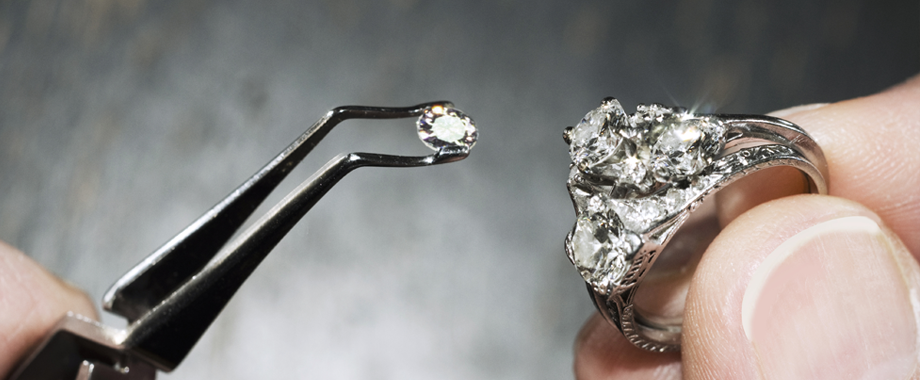
Step 2 (Option #1): Add It to Your Homeowners or Renters Insurance
Many people choose to add their engagement ring to their existing homeowners or renters insurance policy. Typically, mined diamond rings cost more to insure than lab grown diamond engagement rings, because of their affordability. Another perk for lab diamonds!
Homeowners or renters insurance is often the most straightforward option, but you do need to make sure you change this each time you move.
Steps to insure your ring include:
#1 – All-Risk Coverage: Comprehensive Peace of Mind
Jewelry-specific insurance policies often come with all-risk or open-peril coverage. This means your insurance policy protects your engagement ring against almost any potential mishap. That is, of course, unless the policy specifically excludes a particular mishap.
Common exclusions might include general wear-and-tear, intentional damage, or rare scenarios like acts of war. With all-risk coverage, you can rest assured that unexpected events like accidental drops, misplacement, or even mysterious disappearances are accounted for. These policies typically provide comprehensive protection for your valuable investment.
#2 – Loss, Theft, and Damage Protection: Total Security for Every Scenario
One of the key benefits of jewelry-specific insurance is its robust protection against loss, theft, and accidental damage. Whether your ring is stolen during a trip, damaged while doing daily activities, or even misplaced, this type of coverage ensures you’re not left dealing with the loss alone.
Additionally, the flexibility to cover incidents that happen anywhere in the world makes this a preferred option for those who travel frequently or lead active lifestyles.
#3 – Replacement or Cash Payout: Flexibility to Restore Your Ring
Jewelry-specific insurance policies often give you the choice between a replacement option or a cash payout. With the replacement option, the insurance company works to source an identical or equivalent ring, ensuring you maintain the same quality and value.
Alternatively, the cash payout option provides you with funds to purchase a new ring that meets your preferences. This flexibility allows you to handle claims in a way that suits your needs, making it a highly practical choice for engagement ring protection.
Step 2 (Option #2): Purchase a Jewelry-Specific Insurance Policy
Some insurance companies specialize in only jewelry coverage, providing policies tailored to the unique needs of valuable items like engagement rings. Jewelry-specific insurance typically offers:
All-Risk Coverage: Broad Protection for Your Investment
Jewelry-specific insurance policies are designed to offer all-risk or open-peril coverage, ensuring your engagement ring is protected against a wide range of potential issues.
From accidental drops to unexpected misplacement or damage, these policies provide peace of mind by covering almost any scenario unless explicitly excluded, such as general wear-and-tear or intentional damage. This type of coverage is ideal for safeguarding your ring against the unpredictability of daily life.
Loss, Theft, and Damage Protection: Safeguard What Matters Most
Engagement rings are more than valuable—they’re sentimental. Jewelry-specific insurance offers robust protection against common risks like loss, theft, or accidental damage.
Whether your ring is stolen during a vacation, damaged in an unforeseen accident, or even mysteriously disappears, these policies ensure you’re covered. This level of protection allows you to enjoy wearing your ring every day without worrying about the worst-case scenarios.
Replacement or Cash Payout: Choose What Works Best for You
Jewelry-specific insurance gives you the flexibility to decide how to handle a claim. The replacement option works to match your original ring as closely as possible, ensuring the same design and value.
Alternatively, a cash payout allows you the freedom to select a new ring that aligns with your preferences. This dual option ensures you can restore your loss in a way that suits your personal and financial needs, making jewelry insurance a smart choice for protecting your engagement ring.
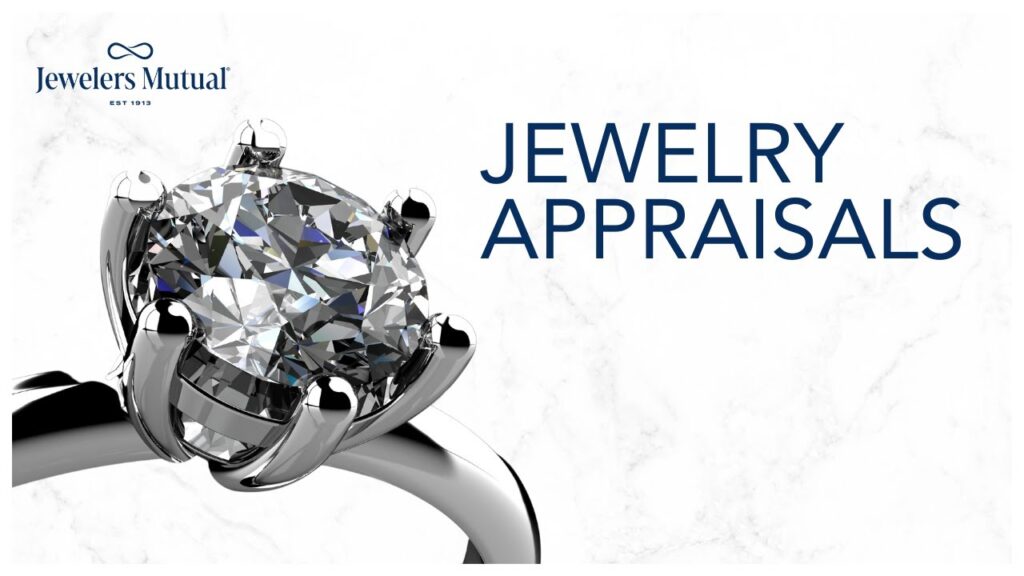
Step 3 – Check Your Credit Card’s Purchase Protection
If you purchased the engagement ring with a credit card, especially one that offers purchase protection or extended warranties, you may already have some limited coverage. Some credit card companies may even offer extended manufacturer warranties, which could be useful if your ring experiences issues like stone loss or breakage.
Usually, credit card insurance typically have a very limited coverage compared to dedicated jewelry insurance, so you may still want to consider a separate policy.
Step 4 – Consider a Ring Appraisal and Value Over Time
When insuring your engagement ring, it’s important that you have a recent appraisal to determine its value. An up-to-date appraisal ensures that your ring is insured for its current market value, including the diamonds, precious metals, and craftsmanship.
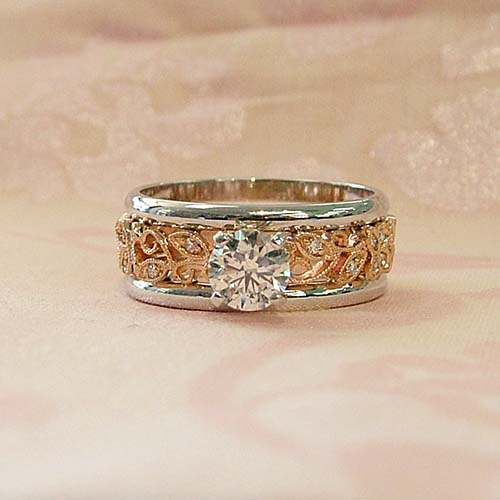
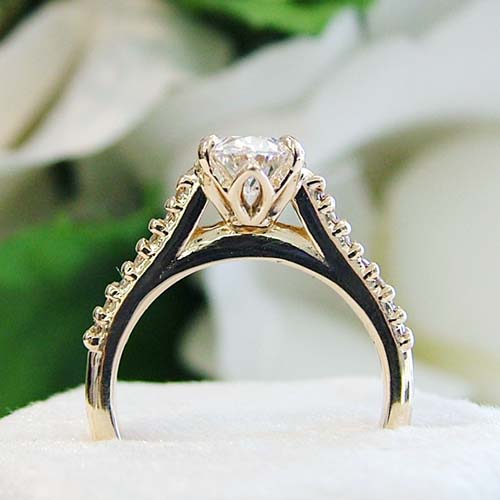
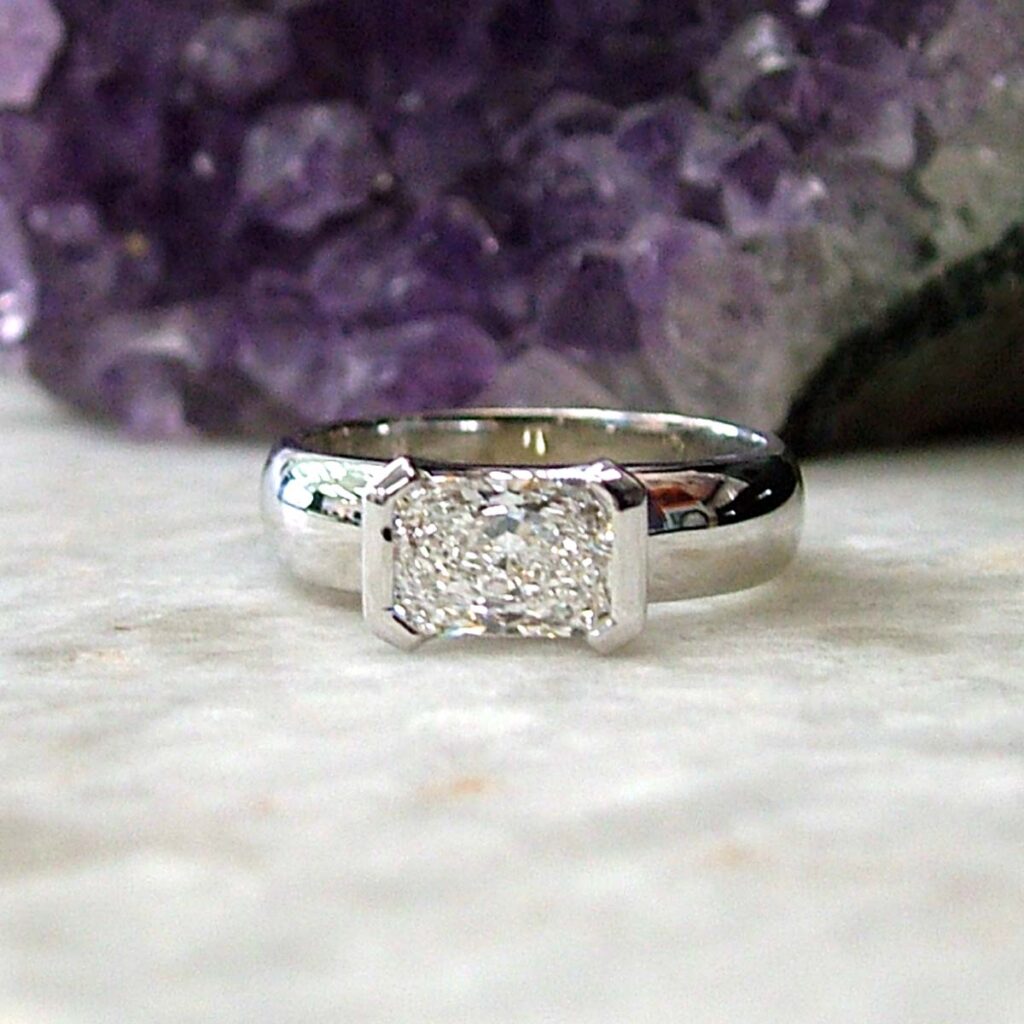
If you’re lucky enough to have a family keepsake for your engagement ring, make sure you have it’s value reassessed periodically. Gemstone and metal prices can fluctuate, so having an updated appraisal of your ring will be necessary.
Step 5 – Understand the Exclusions and Limits of The Policy
Regardless of the type of policy you choose, always read the fine print to understand any exclusions or limitations in the coverage. For example:
- Loss vs. Mysterious Disappearance: Some policies may cover theft but exclude loss or “mysterious disappearance,” meaning the ring must be stolen with a police report filed for the claim to be valid.
- Stone Loss or Damage: Confirm whether stone loss, such as the diamond falling out of the setting, is covered.
- Limits on Coverage: Ensure the value you’re insuring reflects the full appraised value and not a lower limit set by the insurer.
Protect Your Ring, Protect Your Peace of Mind
Your engagement ring is more than a piece of jewelry—it’s a symbol of your love and commitment. Don’t leave it to chance. By securing the right insurance, you can protect your investment against life’s unexpected twists.
Whether you choose to add it to your homeowners policy or opt for jewelry-specific insurance, taking this step ensures your ring is safeguarded for years to come. Start the process today and enjoy the peace of mind that comes with knowing your cherished piece is protected.